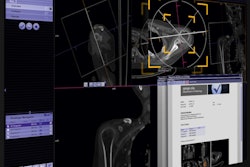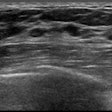Although many abortion opponents believe that women who view ultrasound scans of their fetuses will cancel their decision to pursue abortions, a new study in Obstetrics and Gynecology suggests the impact of the scans may be limited.
In an analysis of medical records of more than 15,000 women seeking abortion care at Planned Parenthood Los Angeles (PPLA), the researchers found that 98.4% of women who voluntarily elected to view preabortion ultrasound images went on to terminate the pregnancy, compared with 99% of women who did not view the images.
However, viewing ultrasound images was significantly associated with a decision not to terminate the pregnancy in the 7.4% of women who had medium or low certainty in their decision to have an abortion.
"Voluntarily viewing the ultrasound image may contribute to a small proportion of women with medium or low decision certainty deciding to continue the pregnancy; such viewing does not alter decisions of the large majority of women who are certain that abortion is the right decision," wrote a team led by Dr. Mary Gatter, medical director of PPLA.
Small but statistically significant difference
Preabortion ultrasound has become a political lightning rod in the U.S. as a number of states have implemented laws requiring pregnant women to view an ultrasound image before going ahead with the decision to terminate a fetus. However, whether such laws actually affect the decision to go ahead with an abortion hasn't been heavily studied.
Seeking to add to the small body of research, a group from PPLA and the University of California, San Francisco (UCSF) analyzed deidentified records for 15,575 women who sought abortion care at PPLA in 2011 (Obstetrics and Gynecology, January 2014, Vol. 123:1, pp. 81-87).
A previous analysis of this dataset had found that ultrasound images were viewed 42.5% of the time. Of these women, 98.4% went on to terminate their pregnancy, a difference of 0.6% (p < 0.001) from the 99% termination rate among those who did not view the images.
Among the group of patients who viewed the images, 95.2% of women with a medium or low decision certainty proceeded to an abortion, compared with 97.5% of women who had a high degree of certainty.
In contrast to two existing studies in the literature that did not show a link between ultrasound viewing and termination rates, the current study found that voluntary viewing was associated with the decision of some women to continue their pregnancy.
"However, the effect was very small -- and should be considered with caution -- and limited to the 7% of patients with medium or low decision certainty," they wrote. "This population may not have been substantially present in prior studies drawing on much smaller samples of patients."
The authors emphasized that the role of ultrasound viewing in abortion care needs to be viewed in context. Other factors, such as gestational age, had stronger effects on the likelihood of whether a woman continued a pregnancy, according to the researchers. The study showed an increase in the odds of continuing a pregnancy that was associated with each gestational age category after nine weeks.
"The importance of gestational age for women deciding to continue the pregnancy suggests that it is the information the ultrasound scan renders -- i.e., gestational dating -- rather than the image that influences women's decision-making," the authors wrote.
The results cannot be generalized to women's experience of ultrasound viewing in settings where it is mandatory, "although given the very high percentage of women proceeding with abortion after viewing the ultrasound image, it is unlikely that mandatory viewing would substantially affect the number of abortions performed," the authors noted.
"It may, however, affect patient satisfaction and health outcomes, which research shows are enhanced when patients feel control over decisions related to their care," they wrote."Mandating that women view their ultrasound images may have negative psychological and physical effects even on women who wish to view."
Voluntary viewing
As for the clinical implications of their findings, the researchers said that women should be offered the opportunity to voluntarily view their ultrasound images before abortion. Mandatory viewing should be avoided, however, as less than half of women want to view the images, according to the group.
"Second, healthcare providers engaged in ultrasound viewing should be sensitive to how patients react to their images but avoid making assumptions about the effect of viewing on patient decision-making," they wrote. "Patients with low decisional certainty about the abortion decision may need more time and support in reaching a decision about whether abortion is the correct decision for them."




















